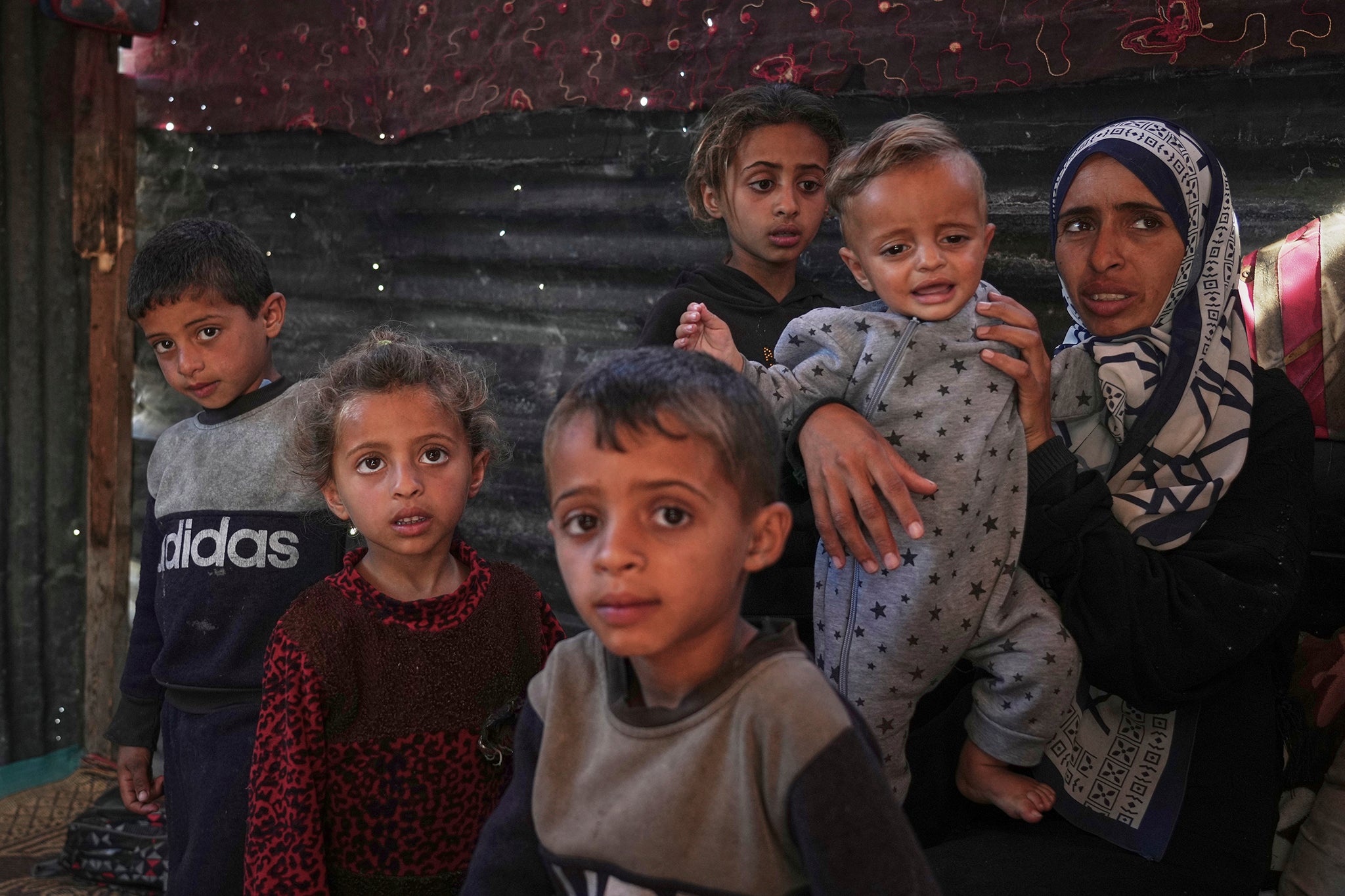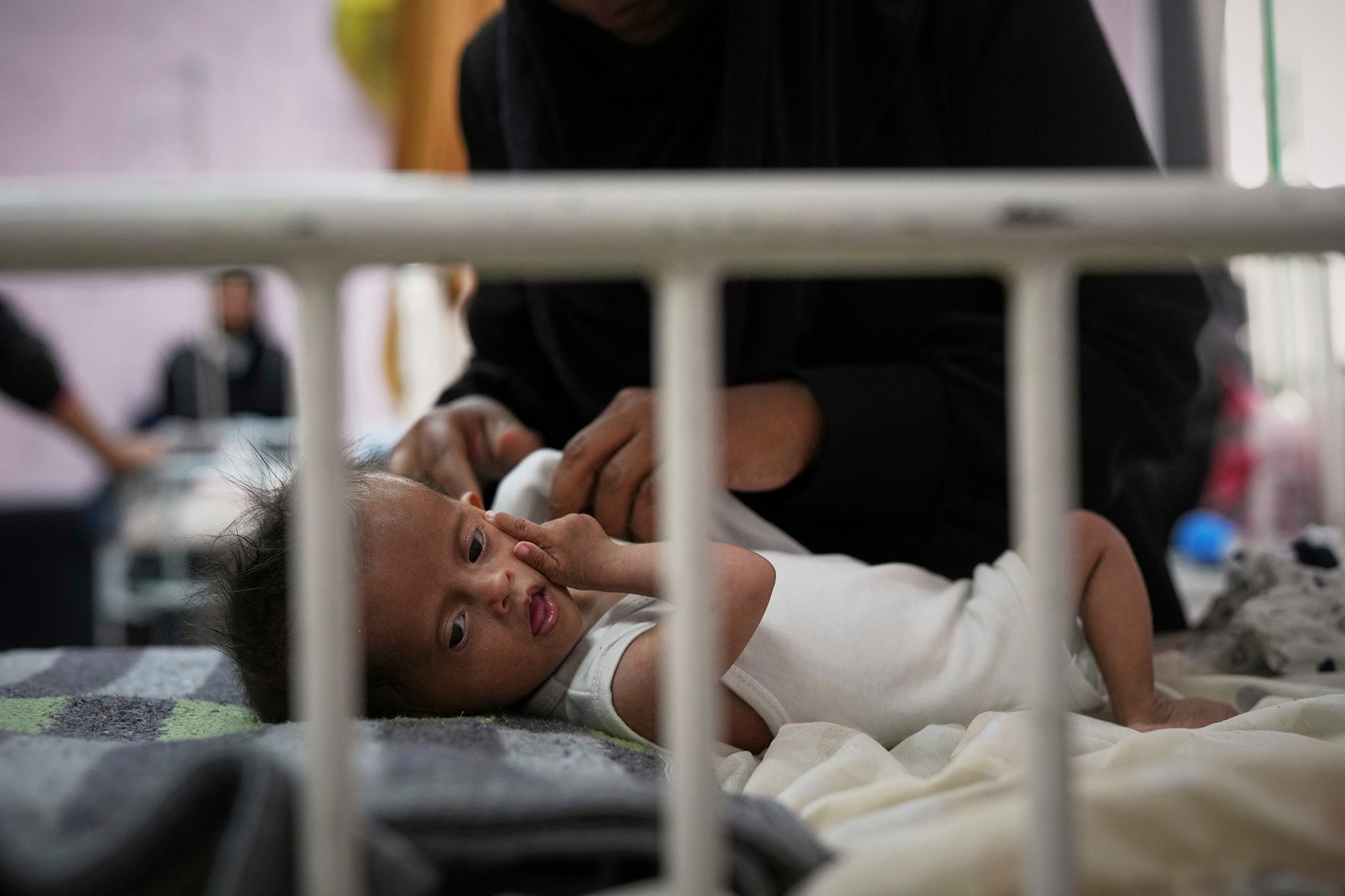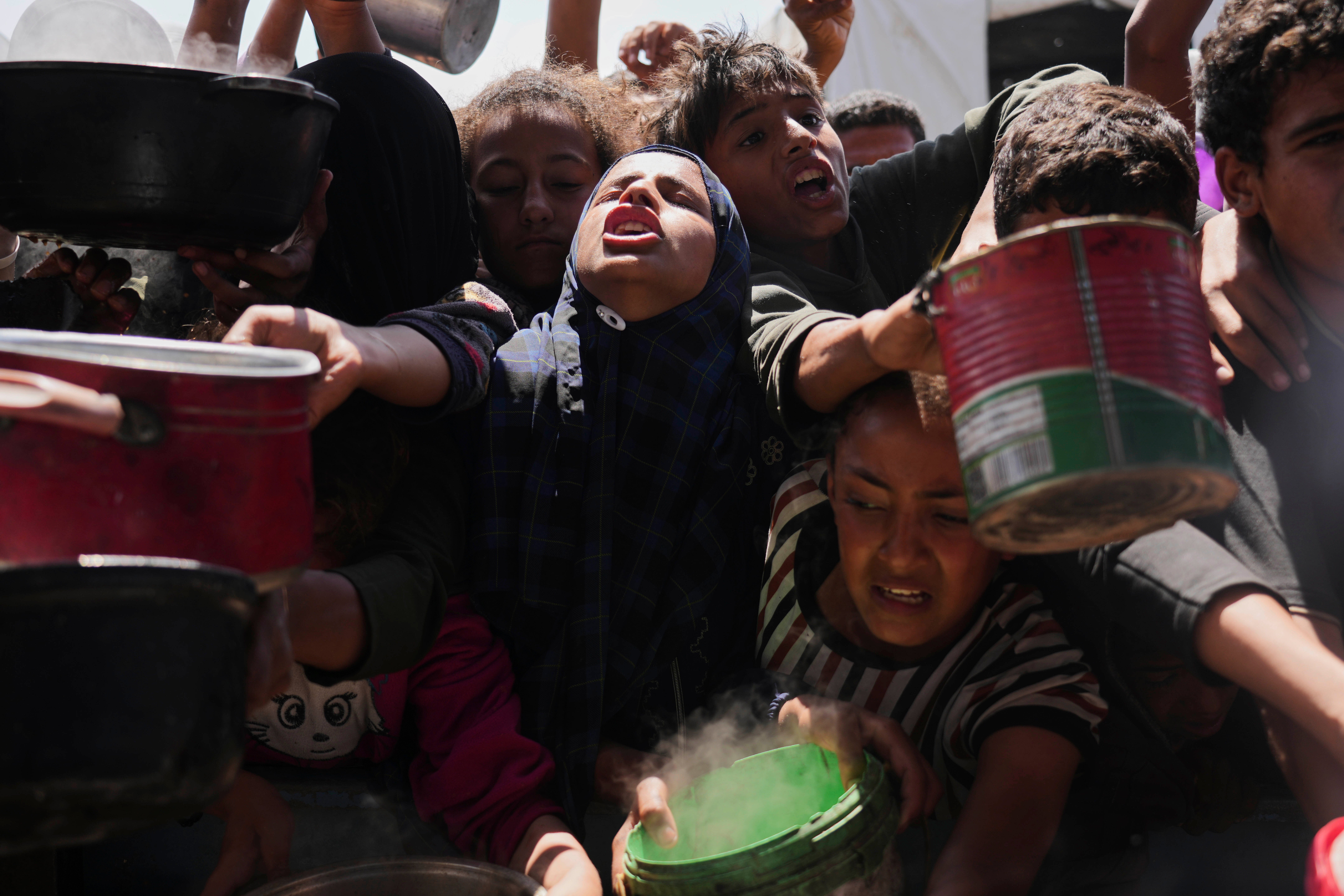ARTICLE AD BOX
The skin is drawn so tightly over the tiny bodies of the emaciated babies in Gaza that they appear both hauntingly newborn and old at the same time.
Doctors treating the daily influx of malnourished children—starving under Israel’s total blockade on aid—say some are so undernourished that they have started to lose their sight.
“The majority of cases are between one month and two years old,” says Dr Raed Al-Baba, a gastroenterologist and nutritionist at Al-Awda Hospital in northern Gaza. He helps treat around 100 children brought in daily, mostly because of hunger.
“Many children are stunted, suffering from severe diarrhoea and anaemia… It’s leading to rickets, bowed knees, and even the inability to move. They can’t see things well or clear as a result of malnutrition,” he adds.
“I hope our voices will reach the world... because our children bear no guilt in this war.”

Israel enforced a full ban on aid entering Gaza three months ago, with its top officials accusing the Hamas militant group of using aid to “feed its war machine”, by stealing goods and profiting from them—something the militants deny.
The devastating move has led to famine-like conditions for the two million people living there, and at least 9,000 children have been admitted for treatment of acute malnutrition since the start of the year, according to the UN children’s agency, UNICEF.
The Hamas-run government in Gaza says 3,500 of them are now at death’s door. On Wednesday the Palestinian Prime Minister, Mohammad Mustafa, declared Gaza “a famine zone” and called on the entire UN system to immediately activate its mechanisms.
The crisis has had a particularly devastating impact on infants and breastfeeding and pregnant mothers. According to OCHA, the UN’s humanitarian office, 92 percent of infants aged 6-23 months and pregnant and breastfeeding mothers are not meeting their nutrient requirements.
Amnesty International has condemned it as “genocide in action”, describing it as part of a “policy of deliberately imposing conditions of life on Palestinians in Gaza calculated to bring about their physical destruction.”
The World Food Programme said last month it had run out of all food stocks in Gaza and all 25 of the WFP-supported bakeries had to close. Local volunteers told The Independent they had less than one week of supplies left to deliver.
In Gaza, families have described how food prices in some cases have increased tenfold—if the goods are available at all. A 25kg bag of rotten flour is just over £220, a kilo of rice is £8, and meat is completely unavailable.
As desperation has set in, it has also triggered violent looting, with aid workers describing armed individuals trying to seize the last scraps available.
There are fears the situation will only escalate, as Israeli Prime Minister Benjamin Netanyahu announced intentions to start an expanded “intensive” offensive against the Palestinian militant group Hamas in Gaza.

Israeli troops have already taken control of approximately one-third of the 42km-long enclave, displacing the population and constructing watchtowers and surveillance posts on cleared land the military has designated as “security zones”. However, the new plan—which follows weeks of stalled ceasefire negotiations with Hamas—would go even further, including the indefinite seizure of parts of the Strip, the forced displacement of civilians “for their own safety”, and control over aid deliveries.
Extreme-right Finance Minister Bezalel Smotrich has warned with this new plan “within a few months ... Gaza will be totally destroyed.”
Speaking at conference for settlements in the occupied West Bank - which are deemed illegal under international law - he added that the population of Gaza will be corralled into a tiny area in the south of Gaza.
“The rest of the Strip will be empty,” he added according to The Times of Israel.
“The Gazan citizens will be concentrated in the south. They will be totally despairing, understanding that there is no hope and nothing to look for in Gaza, and will be looking for relocation to begin a new life in other places.”
The Independent reached out to the Israeli military, which declined to comment, and to Benjamin Netanyahu’s office, but has yet to receive a reply.
But the current operations within Gaza and the plan to expand have even worried the Israeli security establishment, with officials telling left-leaning daily Haaretz that the 59 or so remaining hostages in Gaza—also under the blockade—could be abandoned and die of starvation within days if the Gaza offensive expands.
It has deeply alarmed the international community. Six U.S. senators, including Bernie Sanders, Elizabeth Warren, and Peter Welch, have asked Congress’ watchdog agency to investigate whether restrictions on humanitarian aid deliveries by Israel and other foreign governments are in violation of U.S. law, according to a letter seen by Reuters.

In Gaza, families have described how they were living of a single meal a day.
“Bread has become a thing of the past,” says Najia Abu Al-Rus, a 33-year-old mother displaced from the southern city of Rafah five times, who is reduced to feeding her children rice, salt and water. She describes how her diabetic father frequently slips into comas due to the lack of food—and how they cook over fires made from burning plastic and old clothing.
“The children are feeling dizzy, and skin diseases have spread due to the presence of insects.
“We want nothing from the world except to stop the genocide. We want nothing else,” she adds/
Mustafa Al-Duhdar, 30, a volunteer relief worker, describes the situation in Gaza as “terrifying in every sense of the word.”
He said that the kitchen he works with to implement feeding initiatives was raided by armed gangs, who tried to take over the premises and were eventually beaten back by staff.
“There may have been some hungry people who stormed the premises out of extreme hunger and desperation, searching for any food to satisfy their hunger,” he said, begging the world for a single “morsel of food to satisfy hunger, a sip of clean water, a safe shelter.”
“Even if you cannot stop the massacre, do not be complicit in the silence. Our message to the world: we are not asking for luxury. We are begging for survival. “
“We need the world to feel us, to hear the cry of a hungry child, and to see the tears of a grieving mother. We need life.”
The war began after Hamas-led militants attacked southern Israel on Oct. 7, 2023, killing some 1,200 people, mostly civilians, and abducting 251. Israel says 59 captives remain in Gaza, about 35 of whom are believed to be dead.
Israel's ensuing offensive has killed more than 52,000 people in Gaza, many of them women and children, according to Palestinian health officials.









 English (US) ·
English (US) ·